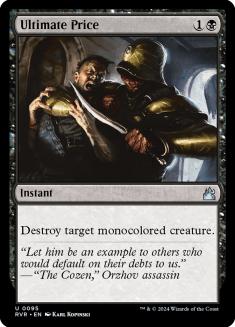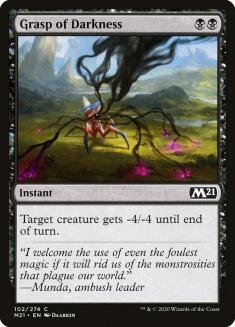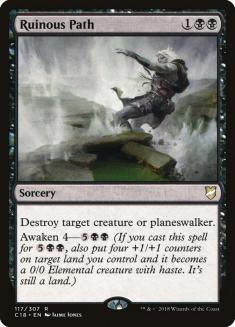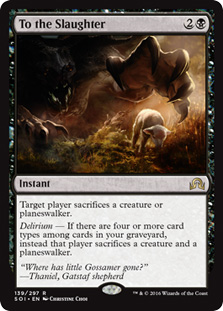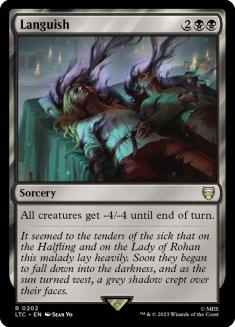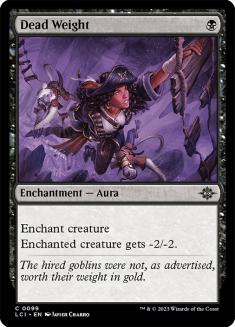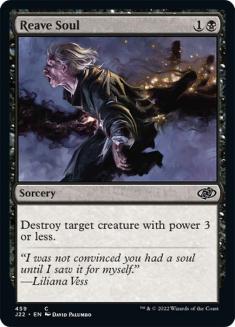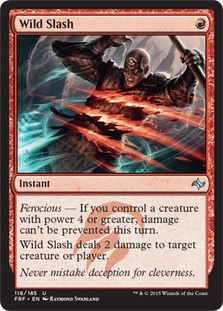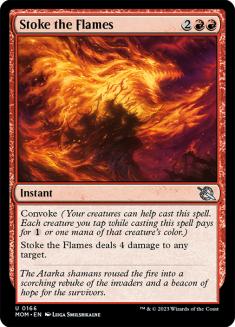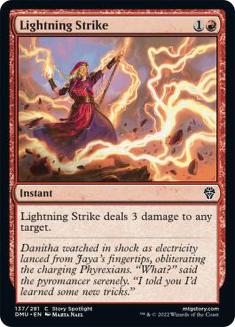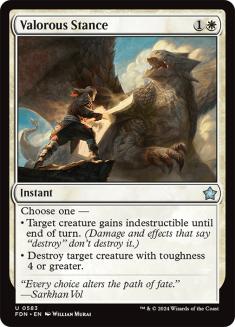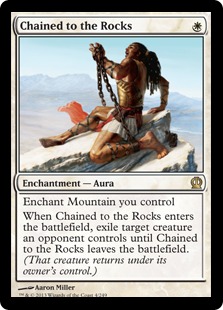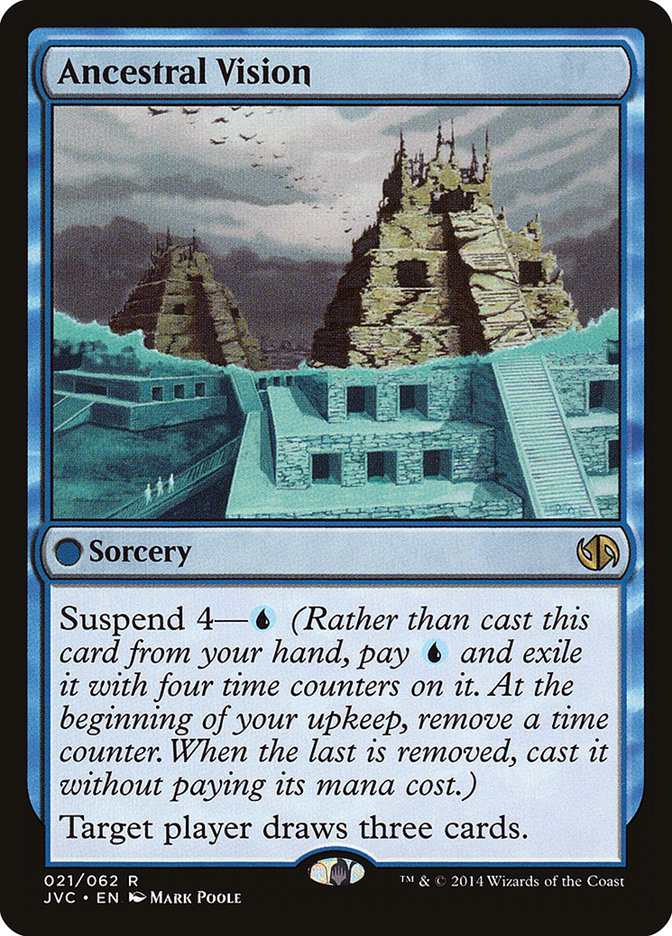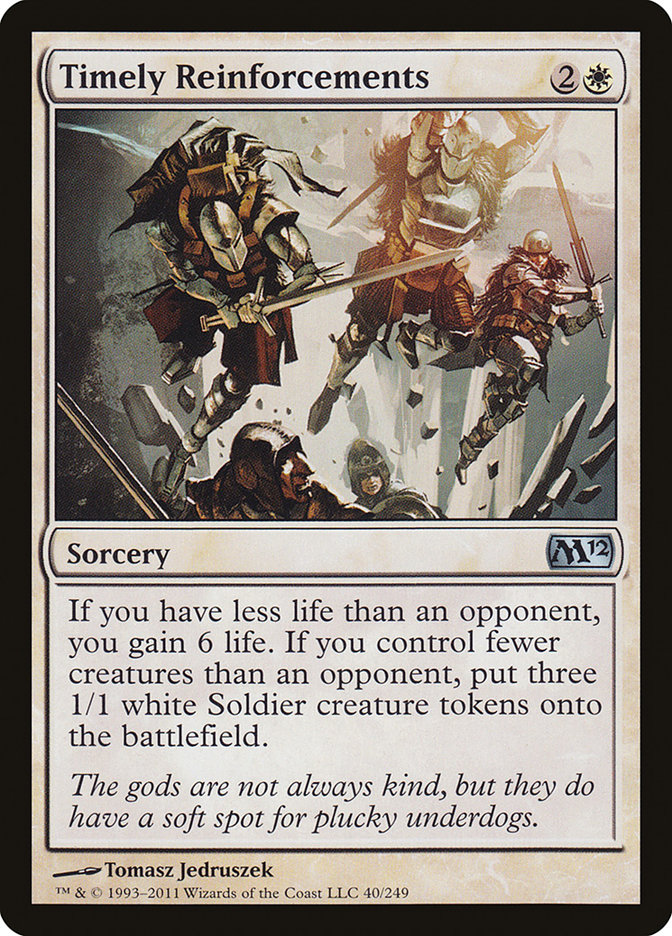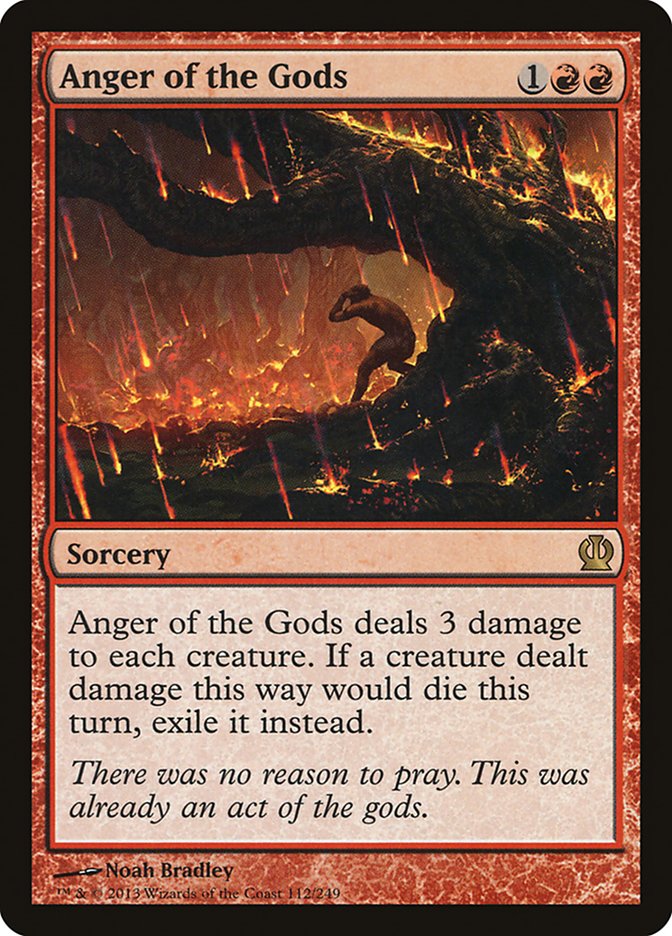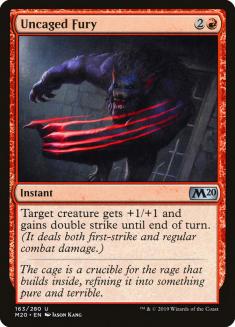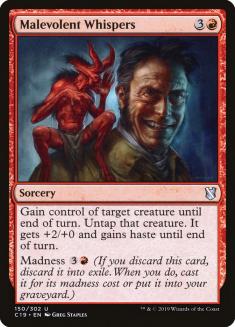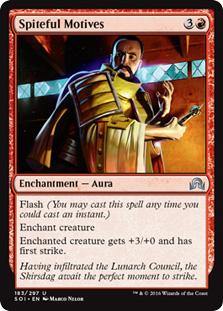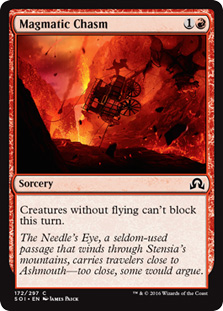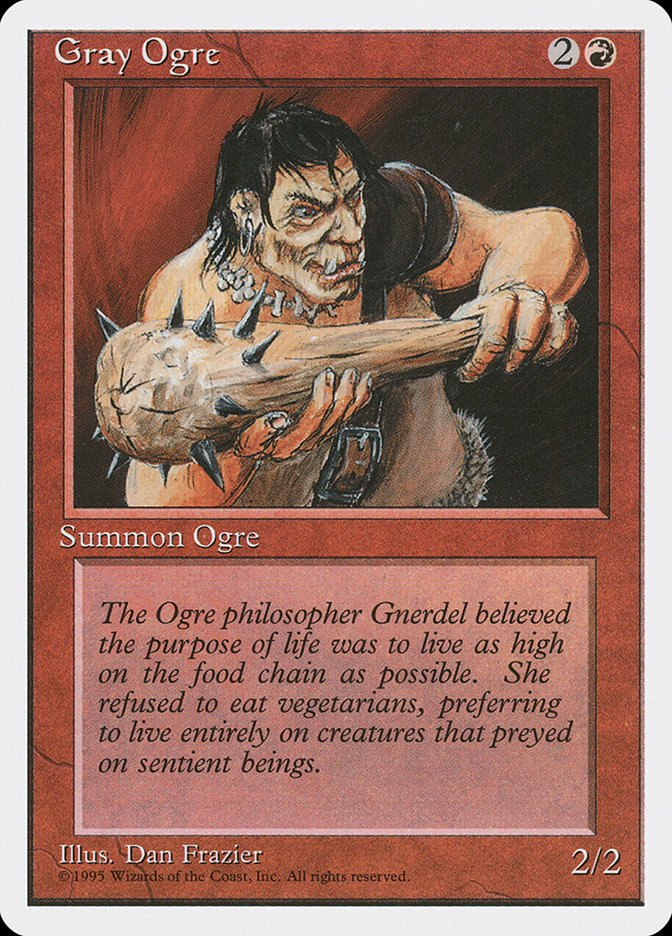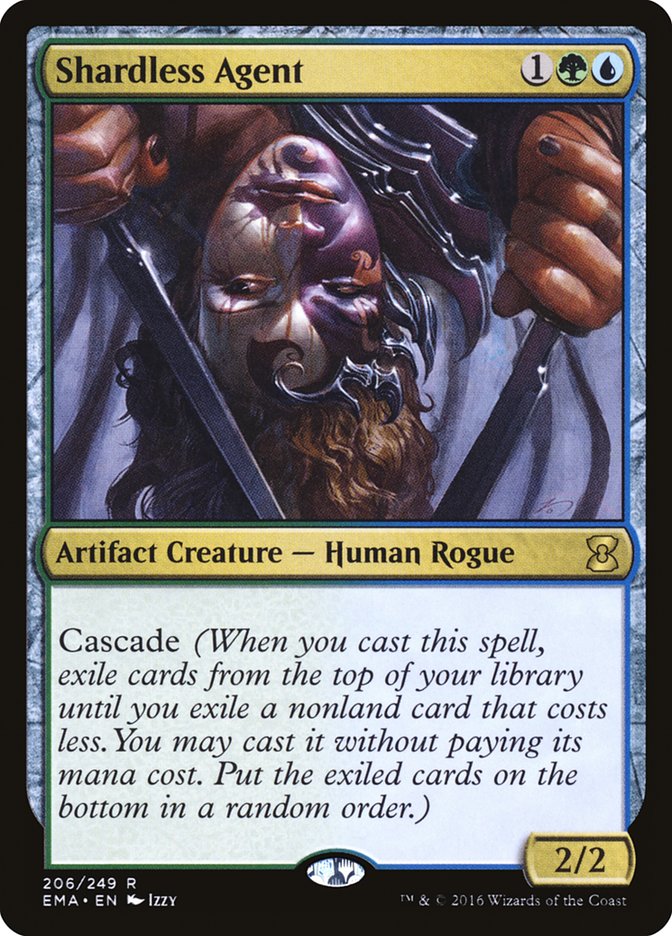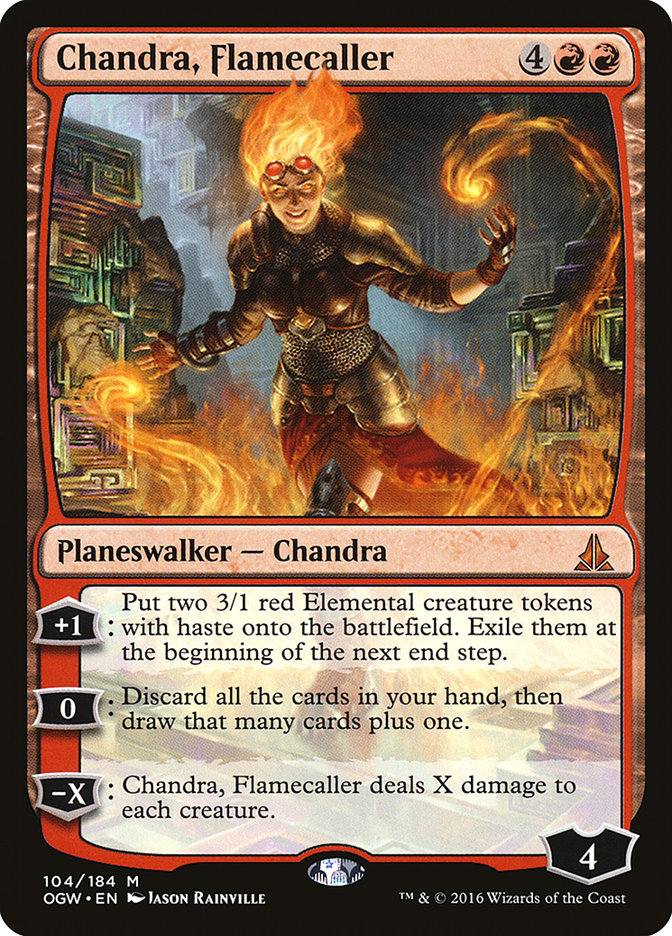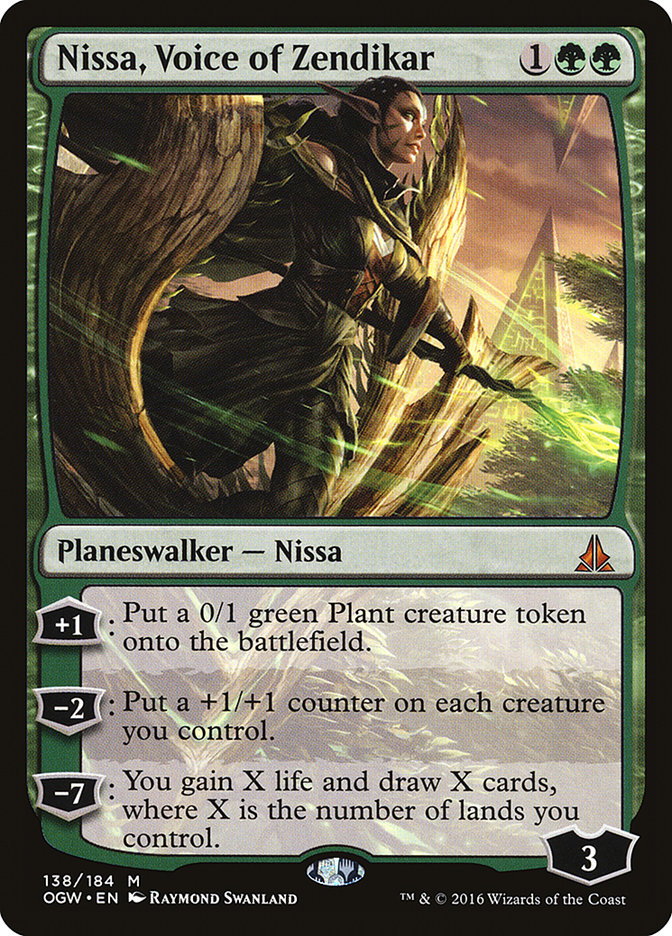 Remand or Vapor Snag. Instead, the games are mostly defined by who gets onto the battlefield more quickly and is able to cement their advantage once they’re ahead.
Remand or Vapor Snag. Instead, the games are mostly defined by who gets onto the battlefield more quickly and is able to cement their advantage once they’re ahead.
Alternatively, there are games where players trade blows, exchanging resource for resource. In ancient times, one player would be able to play a superior attrition game and eventually grind their opponent into the dust. In recent times, those games happen far less frequently because there is too much built-in card advantage for each spell you cast; it’s almost impossible to grind someone out completely. It’s more common that you win the game before you’re able to grind them out.
I’m always on the lookout for ways to break parity in matchups, specifically in the two above scenarios. Most of the time, it comes down to something specific about the matchup, such as a different way to play, or maybe a certain card that breaks it wide open. In reality, there is rarely a secret answer, and all you can do is make slight tweaks for how you interact.
The crux of it all is looking at how all the cards interact with each other in various formats and looking for ways to exploit that. Brad Nelson is phenomenal at it.
Being linear is almost always a poor choice these days, which is why you see more decks that are defined as “good stuff” decks. They appear to get by on power level instead of synergy, and while power level certainly matters, it’s Interaction Advantage that’s the real hero.
Interaction Advantage is many things, which makes it difficult to define, but it is made up of two key points:
1) Cards are more than just the sum of their parts.
2) Being able to do multiple things is going to be more successful than doing a singular thing really well.
Real-life examples are probably the best way to figure out what I’m talking about.
Team-Up
There are fewer Doom Blades these days, and there certainly aren’t any Swords to Plowshares, so choosing which removal spells to play is actually interesting!
Right now, black has access to:
Some cards, like Anguished Unmaking and Ruinous Path, have very few restrictions, but they are expensive. Those cards are great, but we often need ways to interact earlier, so we have to choose which situational removal spells to play.
It reminds me of building R/W decks during Khans of Tarkir Standard, where you had:
Wild Slash was cheaper and often better than Lightning Strike, but it made you much weaker against Mantis Rider, Fleecemane Lion, and Sidisi, Brood Tyrant. You could load up on Valorous Stances to fight Siege Rhino, but then you’d be weak to the smaller creatures.
Chained to the Rocks was the great catchall, but it wasn’t playable in Jeskai without jumping through hoops. Even slotting it into a R/W deck created some interesting deckbuilding restrictions.
Basically, how you configured your removal suite was how you tuned your deck. Those choices also influenced how well your threats performed. For example, if you played Brimaz, King of Oreskos, your matchup against small creature decks was probably fine, but you struggled against Siege Rhinos that would invalidate your Brimaz. In those versions, you’d prefer to play more Valorous Stances.
The ways the cards interact with each other should influence your deckbuilding, and you should definitely pay attention to how the addition (or subtraction) of various cards alters how powerful your other cards are. If possible, you can have your cards team up and work together to solve certain problems.
Ancestral Vision has made an impact in Modern, but so far, it’s seemed completely fair, at least compared to everything else in the format. Still, most players seem to be jamming it into existing decks without considering how it impacts everything else.
In Modern, it’s not uncommon to die before your Ancestral Vision comes off suspend. Being down one mana and a card to suspend an Ancestral Vision makes it even more difficult to stay afloat, so you need some drastically battlefield-altering effects.
While these cards are typically relegated to the sideboard, now is a great time for them in Modern. Zoo and Abzan Company are rather popular, and both spells will buy you enough time to allow your Ancestral Vision to come off suspend. When you’re trying to stabilize while having a Nahiri, the Harbinger on the battlefield, both of those cards will help you do that too!
Timely Reinforcements and Anger of the Gods are two of the most powerful cards for what they do, and they will accomplish things that multiple Paths to Exile, Lightning Bolts, and Snapcaster Mages can’t. They will make your Nahiris and Ancestral Visions better at doing their jobs, and they also happen to be well-positioned at the moment.
Some of the ways cards team up to be more than the sum of their parts is apparent in Limited also. Here’s my recent RPTQ deck with all the relevant sideboard options:
Creatures (13)
- 1 Mad Prophet
- 1 Tooth Collector
- 1 Incorrigible Youths
- 1 Heir of Falkenrath
- 1 Breakneck Rider
- 1 Vampire Noble
- 1 Voldaren Duelist
- 1 Accursed Witch
- 1 Ghoulcaller's Accomplice
- 1 Howlpack Wolf
- 1 Insolent Neonate
- 1 Wicker Witch
- 1 Sanitarium Skeleton
Lands (17)
Spells (10)

This deck wasn’t very high on power level, but it was scrappy and I liked it. I especially liked how I built it, although others did not share my enthusiasm.
“Why aren’t you playing Stensia Masquerade?”
“Isn’t Triskaidekaphobia insane?”
“Pyre Hound is decent in your deck.”
“No equipment?”
The issue is that I don’t think the cards in my sideboard work well with the cards in my maindeck.
Those five cards complement each other more than any of the cards I left in my sideboard. For example, drawing any combination of the two is going to do more for me than drawing Triskaidekaphobia and one of them.
It gave my deck a sort of odd linearity where my only gameplan was to deal twenty points of damage, but it meant that my ways to push through damage and win races all worked well together. I would hate to use various spells to get my opponent down to five, only to draw Triskaidekaphobia or Stensia Masquerade, which won’t necessarily help me get those last few points in.
What if Triskaidekaphobia were a Startled Awake instead? It’s clear that having 39 cards devoted to beating them down with one random (albeit powerful) mill card probably isn’t correct. Those cards aren’t exactly the same thing, but the lesson remains. You don’t put Lava Spike in your control deck because that’s not how you plan on winning the game.
Triskaidekaphobia could probably win me games that no other card in my Sealed pool could, but that’s not the issue. I want my deck to function and be fluid, not just be a pile of cards where I tried to scrape together a victory condition based on what I drew.
While it’s true that linearity is less useful these days, I do think it’s important to note when you have five slots for scrappy cards that need to give you a form of reach, it’s probable that using ones with synergy is correct.
Now, my record was 1-2, but I don’t think that’s indicative of how I built my deck. Rather, my poor play cost me each and every game I lost. I knew that leaving Triskaidekaphobia on the bench could be a mistake, so I tried to pay attention to whether or not it would have helped me in any of the games I played. Was there a matchup where I was very good at getting them to ten or so, but couldn’t deal the rest? If so, that’s probably a matchup where I’d actively want Triskaidekaphobia.
What They’re Doing Matters
Once upon a time, I advocated cutting the best card in your deck for fear of it getting stolen. At the time, it was somewhat controversial, but it was correct. One of the best cards against Zoo was Tarmogoyf, so you didn’t want to give the Faeries deck their own Tarmogoyf courtesy of Threads of Disloyalty. Having a big creature wasn’t integral to beating Faeries, so siding out Tarmogoyf, even though it was powerful, made sense.
At the end of the day, your cards are only as good as they are against your current opponent. Even your best, most powerful card can be a liability.
A New Angle of Attack
Hangarback Walker isn’t great in every situation, nor is it great in every matchup. No matter what happens, it’s always overcosted for its front end, yet for a time it dominated Standard. The secret is that it adds a new element to your deck that nothing else can replicate, therefore it’s valuable.
It trades with low toughness creatures for value, is something your opponent doesn’t want to remove because the small army of Thopters is more difficult to deal with than the single creature, is a flying army on demand if you have a way to remove it yourself, and is great if you can sacrifice it for value.
On rate, Hangarback Walker is easy to overlook, but it doesn’t take many times playing against it to realize how annoying it can be.
Dryad Arbor is a card that Tom Ross typically plays in Infect but many people undervalue. They might side it out too much or not use it appropriately, but that’s because what it does isn’t obvious. Sure, the most common scenario is probably protecting an infect creature from Liliana of the Veil, but that’s not all:
– It facilitates the kill with normal damage, made even easier by the existence of Become Immense and Wild Defiance.
– It trades with utility creatures such as Dark Confidant or Young Pyromancer, trades with Snapcaster Mage against an aggressive blue deck, or chump blocks a Tarmogoyf to win a race. For Tom, it’s also blocked a Goblin Guide on turn 1 and won the exchange thanks to Mutagenic Growth.
– It pressures planeswalkers, especially with the plethora of pump spells in the deck, which makes it difficult for a midrange or control deck to get ahead.
When the Dryad Arbor is bad, it’s very bad. Sometimes it gets caught up in a sweeper and it’s rather terrible in your opening hand, but it still adds an angle to Infect that it didn’t have before. Having a utility card in your otherwise linear deck seems strange, but the added benefits are worth it.
Even Gray Ogres Matter
When Battle for Zendikar was released, I played a five-color Bring to Light deck at #SCGINDY. For the most part, it was creature-light, but the creatures I did have were very important.
In one of my matches, my opponent and I both had great draws, but I ended up coming out on top thanks to this sequence:
My Turn 2: Jace, Vryn’s Prodigy.
His Turn 3: Ruinous Path targeting Jace.
My Turn 3: Nissa, Vastwood Seer.
His Turn 4: Gideon, Ally of Zendikar, making a 2/2 Knight Ally.
My Turn 4: Siege Rhino.
His Turn 5: Ob Nixilis Reignited, -3 targeting Siege Rhino, +1 Gideon, attack with Gideon.
My Turn 5: Silumgar’s Command, destroying Gideon and bouncing the Knight Ally, attack Ob Nixilis with Nissa.
Without Nissa, I would have been in a reasonable position, but it would have been an uphill battle.
If my opponent had played around the Silumgar’s Command, they could have made another Knight Ally, which would have made my life more difficult. Thanks to Nissa, I would have been able to continually pressure Ob Nixilis, although my opponent would have gotten some extra cards off it.
Is having a pair of 2/2s double block a 3/3 considered synergy? I think it’s something else entirely.
Most people think Shardless Sultai is a deck that’s based on cascading into Ancestral Vision, but that’s incorrect. People tend to look at the “cascade into Ancestral Vision” part of things without even considering that the 2/2 body is relevant. Owen Turtenwald compared Painful Truths to that “combo,” saying it’s basically the same thing without having to get lucky. As always, I think he was being tongue-in-cheek, but that’s not the only reason Shardless Agent is in the deck.
On the surface, a 2/2 body doesn’t accomplish much. Most creatures worth playing outclass it on rate, leading to situations where it might not be able to attack or block effectively. However, the majority of games don’t play out that way, with each card on the curve outclassing what happened on the previous turn. In most games, you’d love to have an extra 2/2 body in play because there’s more you can do with it than attack for two.
– For a while, double blocking a Nimble Mongoose was one of the best uses of Shardless Agent and one of the best answers to that card. Temur Delver isn’t as big as it used to be, but double blocking opposing Tarmogoyfs is an easy way to deter them from attacking their Tarmogoyf into your Tarmogoyf and finishing it off with a Lightning Bolt.
– It protects your Deathrite Shaman or Tarmogoyf from Liliana of the Veil.
– It blocks to protect your Jace, the Mind Sculptor or Liliana of the Veil.
– It pressures opposing planeswalkers.
– It gets in some chip damage, which is valuable when some of your win conditions (Creeping Tar Pit and Deathrite Shaman) deal chip damage themselves. Closing the game is particularly valuable in a format like Legacy where the card quality is high and the games are swingy.
– It grows your Tarmogoyf to obscene levels thanks to being an artifact creature.
That’s quite the laundry list of things that a simple 2/2 is capable of.
I’ve talked about Cardboard Advantage in the past, which is basically another form of Interaction Advantage. The usefulness of a random 2/2 body is often undervalued, but just having that extra resource can be game-winning at times. Shardless Agent (and Bloodbraid Elf) are great examples. Thraben Inspector, Elvish Visionary, and decks built around Collected Company operate around the same principles.
Why This Is Suddenly Relevant
Planeswalkers are a common theme among my examples.
Ever since the introduction of playable four-mana planeswalkers, Interaction Advantage has been (more) relevant. Cards like Gideon, Ally of Zendikar are the driving force behind random bodies actually mattering. Attacking planeswalkers, defending them, and using them to create tempo (momentum) and snowball is more important than ever.
Having ways to attack planeswalkers directly is more valuable than killing them directly with something like Ruinous Path or Anguished Unmaking, as it means you have control of the battlefield and any subsequent planeswalker of theirs will likely suffer the same fate. Similarly, once you’re ahead, your own planeswalkers are more difficult to remove.
It’s not just about planeswalkers, though. As I mentioned earlier, the random bodies are relevant in many situations. As players add more angles of attack, so should you, as those decks are frequently the best decks in their respective formats.
Sometimes a deck is just a pile of the most powerful cards and you have no choices, but power is subjective. True power is more likely to come from being able to interact with your opponent in various ways.

